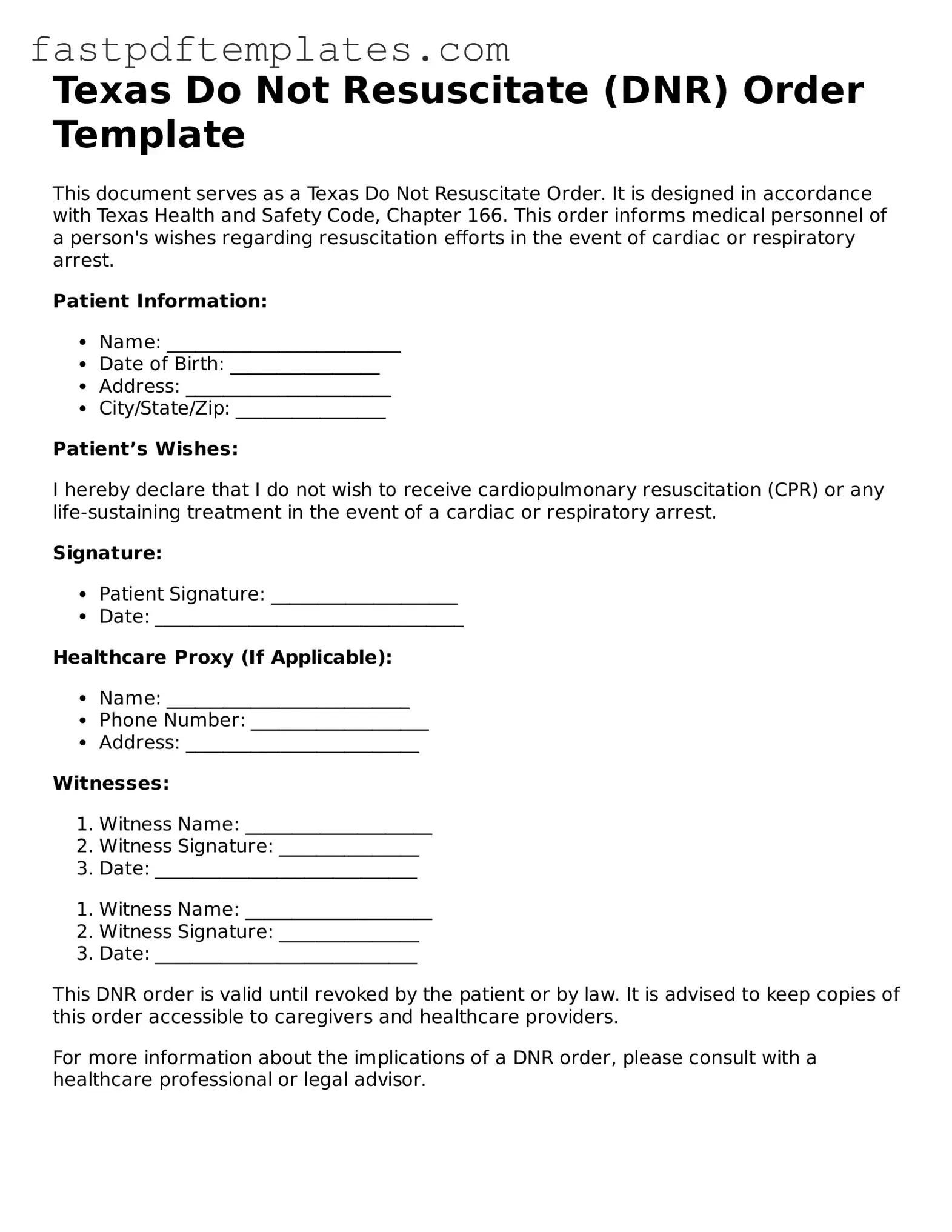Texas Do Not Resuscitate (DNR) Order Template
This document serves as a Texas Do Not Resuscitate Order. It is designed in accordance with Texas Health and Safety Code, Chapter 166. This order informs medical personnel of a person's wishes regarding resuscitation efforts in the event of cardiac or respiratory arrest.
Patient Information:
- Name: _________________________
- Date of Birth: ________________
- Address: ______________________
- City/State/Zip: ________________
Patient’s Wishes:
I hereby declare that I do not wish to receive cardiopulmonary resuscitation (CPR) or any life-sustaining treatment in the event of a cardiac or respiratory arrest.
Signature:
- Patient Signature: ____________________
- Date: _________________________________
Healthcare Proxy (If Applicable):
- Name: __________________________
- Phone Number: ___________________
- Address: _________________________
Witnesses:
- Witness Name: ____________________
- Witness Signature: _______________
- Date: ____________________________
- Witness Name: ____________________
- Witness Signature: _______________
- Date: ____________________________
This DNR order is valid until revoked by the patient or by law. It is advised to keep copies of this order accessible to caregivers and healthcare providers.
For more information about the implications of a DNR order, please consult with a healthcare professional or legal advisor.
